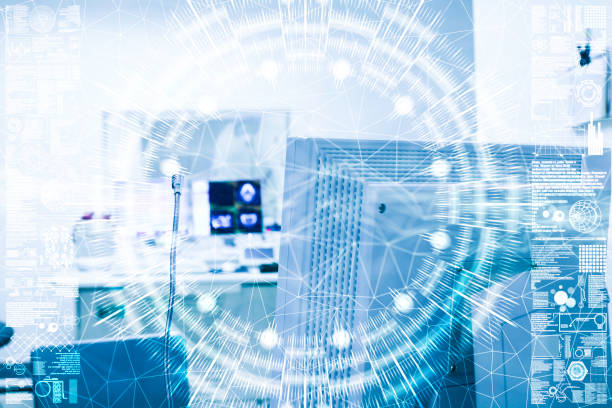Introduction
In today’s fast-paced digital landscape, network technologies play a crucial role in ensuring seamless connectivity. One such emerging term, epotnet, has gained attention for its impact on data transmission and network efficiency. Whether you’re a tech enthusiast, a business owner, or a network engineer, understanding epotnet can help you stay ahead in the industry. This article explores the epotnet in depth, including its definition, applications, benefits, and future potential.
What is Epotnet?
Definition and Overview
Epotnet is a network solution designed to enhance data transmission efficiency through advanced fiber-optic technology. It integrates high-speed internet protocols, reducing latency and ensuring reliable connectivity across various sectors.
Key Components of Epotnet
- Fiber Optic Infrastructure – Utilizes optical fibers for high-speed data transmission.
- Data Encryption Mechanisms – Ensures secure communication channels.
- Cloud Integration – Enables seamless data storage and retrieval.
- Scalability Features – Supports network expansion and increased traffic.
Epotnet stands out due to its ability to offer high-speed, low-latency, and cost-effective network solutions, making it ideal for modern businesses and enterprises.
How Epotnet Works
Network Architecture
Epotnet operates using passive optical network (PON) technology, allowing data transmission over long distances without requiring active electronic components. It follows a structured approach where data packets are distributed efficiently through optical splitters, reducing power consumption and maintenance costs.
Data Transmission Process
- Signal Generation – Converts digital data into optical signals.
- Signal Distribution – Sends signals through fiber-optic cables to multiple endpoints.
- Data Reception – Converts optical signals back into digital form at the user’s end.
- Error Correction – Ensures accurate data transmission with minimal loss.
Epotnet’s streamlined process enhances network efficiency, supporting industries that require fast, uninterrupted, and secure data flow.
Applications of Epotnet
Telecommunications
Epotnet plays a vital role in broadband internet services, ensuring high-speed connections for businesses and homes. Telecom companies leverage its infrastructure to provide reliable and scalable network solutions.
Cloud Computing and Data Centers
With the rise of cloud-based applications, Epotnet enables seamless data transfer and storage across multiple servers. Its low-latency capabilities ensure optimal performance for cloud computing services.
Smart Cities and IoT
Smart city initiatives rely on Epotnet for real-time communication between IoT devices. It supports applications such as traffic management, surveillance systems, and automated services.
Healthcare and Remote Work
Epotnet enhances telemedicine by providing stable connections for virtual consultations, remote diagnostics, and digital healthcare records. Additionally, it facilitates smooth communication for remote work and virtual teams.
Benefits of Epotnet
1. High-Speed Connectivity
Epotnet’s fiber-optic foundation enables gigabit-speed data transmission, making it ideal for bandwidth-intensive applications.
2. Cost-Effective Solution
Unlike traditional networks that require expensive maintenance, Epotnet uses passive optical components, reducing operational costs.
3. Enhanced Security
Epotnet incorporates advanced encryption protocols, ensuring data remains secure from cyber threats and unauthorized access.
4. Scalability and Flexibility
As businesses grow, Epotnet supports seamless network expansion without significant infrastructure changes.
5. Low Power Consumption
Since Epotnet relies on passive optical components, it significantly reduces energy consumption, making it an environmentally friendly choice.
Future of Epotnet
Advancements in AI and Automation
Epotnet is expected to integrate with AI-driven network management systems, optimizing data flow and predictive maintenance.
5G and Beyond
The evolution of 5G technology will further enhance Epotnet’s capabilities, supporting ultra-fast, low-latency applications.
Global Adoption
Countries worldwide are investing in fiber-optic networks, making Epotnet a key player in future digital infrastructure development.
FAQs
1. What makes Epotnet different from traditional networks?
Epotnet leverages fiber-optic technology and passive optical components, making it faster, more secure, and cost-effective compared to traditional copper-based networks.
2. Can Epotnet be used for home internet services?
Yes, Epotnet is suitable for residential broadband, offering high-speed and stable connections for streaming, gaming, and remote work.
3. Is Epotnet compatible with existing network infrastructures?
Epotnet can integrate with modern fiber-optic networks while supporting legacy systems through hybrid solutions.
4. How does Epotnet ensure data security?
It uses advanced encryption techniques and firewall protection to safeguard sensitive information from cyber threats.
5. What industries benefit the most from Epotnet?
Industries such as telecommunications, healthcare, cloud computing, and IoT benefit significantly from Epotnet’s high-speed and secure data transmission capabilities.
Conclusion
Epotnet is revolutionizing the way data is transmitted across various industries, offering a high-speed, secure, and scalable network solution. As technology advances, its integration with AI, 5G, and smart infrastructure will further enhance its capabilities. Whether you are a business owner, IT professional, or tech enthusiast, staying informed about epotnet can help you make the most of this innovative technology.
Also Read: Iganomy





